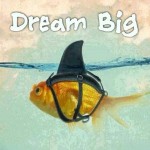How often have you thought about your core ideologies and your future as a professional? I haven’t myself, but as I led my organization through a strategic planning process and learned how to develop successful organizations, I began to think about how I could apply that process personally. Using ideas from a book by Jim Collins called “Built to Last: Successful Habits of Visionary Companies,” I came up with some initial thoughts below. It’s a work in progress, and they’re a product of quick brainstorming tonight, so I know they’ll evolve as I have more opportunities to reflect deeper on my purpose and aspirations. I’m also revealing some of my honest (and maybe flawed) thinking at this point in my life. Nevertheless, I’m choosing to share them with you to encourage you to also think about your vision.
CORE IDEOLOGY:
Core Values:
- Trust, respect, and value diversity and inclusion of ideas.
- Deep value of community in the workplace.
- Question status quo.
- Lead through trust and collaboration.
- Committed to helping and making other people’s lives better.
- Treat people with dignity and respect.
- Committed to life-long and continuous learning.
- Find the goodness in others and help them fulfill their potential.
- …
Purpose: To contribute to the betterment of society by promoting student success in higher education through technology and mentorship. Student success means students develop as a “whole person” while at the university and prepare them for their next steps, which could include attending grad school, getting a job, or following their passions.
ENVISIONED FUTURE:
BHAG (Big, Hairy, Audacious Goals):
To become one of the most recognized practitioner/scholar experts in higher education due to successful and proven leadership/implementation of transformative practices involving technology leading to dramatic improvement of student success in higher education.
Vivid Descriptions
- Together with researchers and scholars, will develop new theories or advance existing theories that reflect the current and future needs/interests of the diverse and changing higher education student demographics.
- Together with researchers/scholars/practitioners/vendors/students/technology professionals, we will design and develop common standards and shared services n higher education that will enable information systems across institutions to easily interface with each other, are easy to implement, and use, and are learner-centered.
- …
What are your core ideologies and envisioned future?



